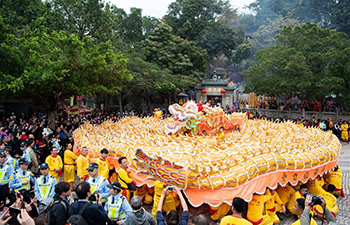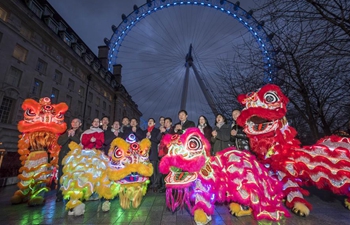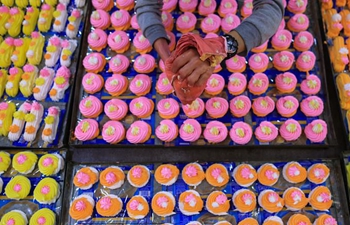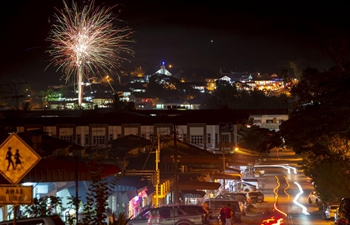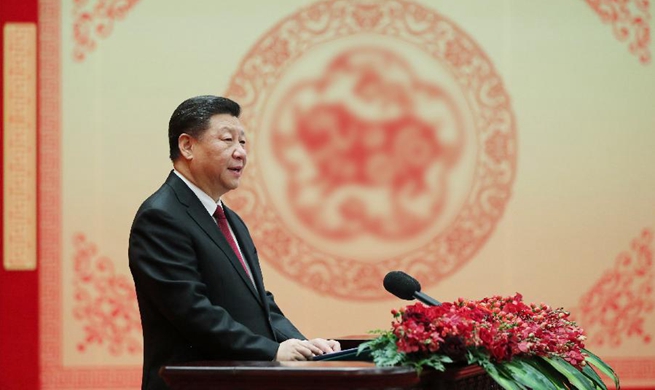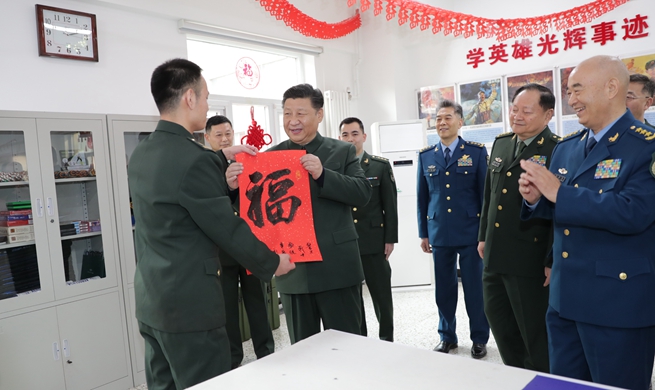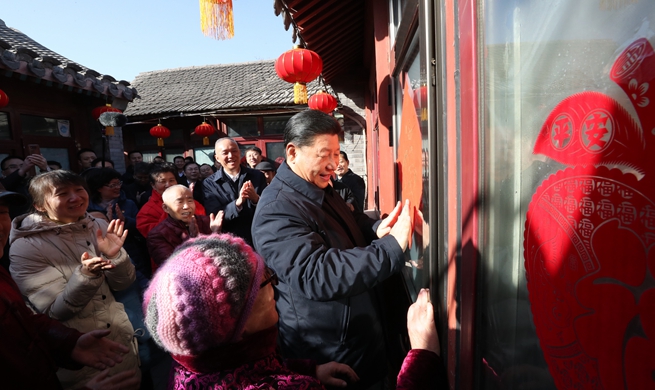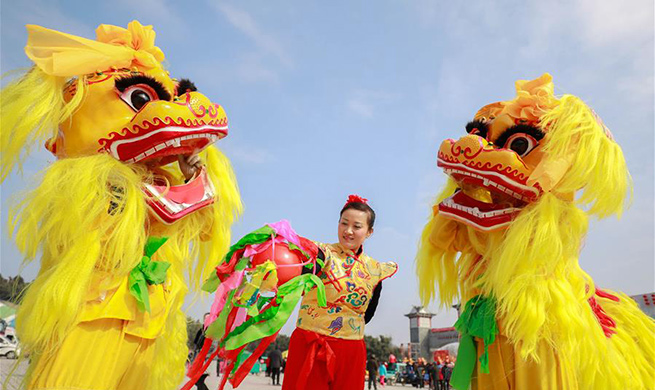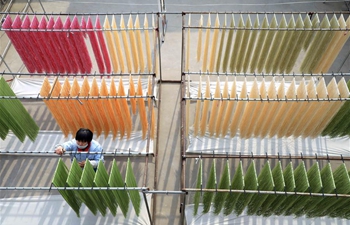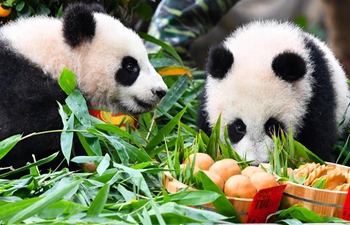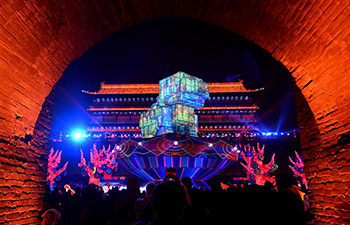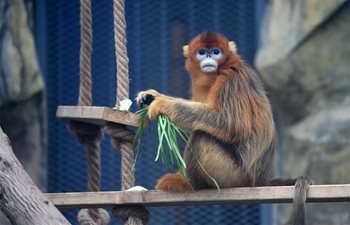BEIJING, Feb. 5 (Xinhua) -- Tuesday marks Spring Festival, or the first day of the Chinese new year. People across the country are celebrating the most important festival of the year in different ways.
At the Small Wild Goose Pagoda of Xi'an, northeast China's Shaanxi Province, a traditional style temple fair is attracting many participants. Amid the ringing of bells, tourist join a new year praying ceremony that dates back to Tang Dynasty (618-907).
"It's great to relive traditional activities at this time of the year. I'm happy to see that the ancient culture is being cherished," said Zhang Fengqiao, who is enjoying the fair with his child.
In Changshun county of Bouyei-Miao Autonomous Prefecture of Qiannan, southwest China's Guizhou Province, an innovative pig chasing race was held on new year morning to mark the Year of the Pig. Some 100 local residents joined the race, and winners could take home the pigs they caught.
In the Jimo ancient town of Qingdao, east China's Shandong Province, the 2,200 meters ancient city walls are decorated with colorful lights that are turned on at night. Lion and tiger dances, traditional dances and local opera are lightening up the town with joy.
In north China's Inner Mongolia Autonomous Region, many people of Mongolian ethnicity are celebrating Spring Festival with a traditional ceremony to worship the heaven.
In the cold winds of the grassland, herdsman Buhebater and his family carry hadas, wine and dairy products while walking around an Aobao, a stone mound serving as signpost and believed to be the dwelling place of a god.
They threw items to the Aobao, sacrificing to the god and praying for peace and prosperity in the new year. After the ceremony, the family members start to give new year greetings to each other. Later they will go out to visit relatives and friends.
Tuesday also marks Tibetan New year, which coincides with the Spring Festival this year. The Tibetan New Year is normally celebrated by religious rituals, prayers, horse races, family gatherings and feasts.
In Xirika village of Nyingchi in Tibet, Zhoima's kitchen is hanging with strings of fresh meat. The "Qiema," a two-tier rectangular wooden box, on the table has a butter sculpture inside, a traditional Tibetan decoration used to serve the Buddha during new year.
Villager Soinam Qoizong and some other high school children are practicing traditional dances for the new year. Her mother Gesang Zhoima is preparing for dinner. "In the past we could not afford good food even in new year. Now we are better off and the fridge is full of materials for hot pot, Soinam's favorite," she said.




